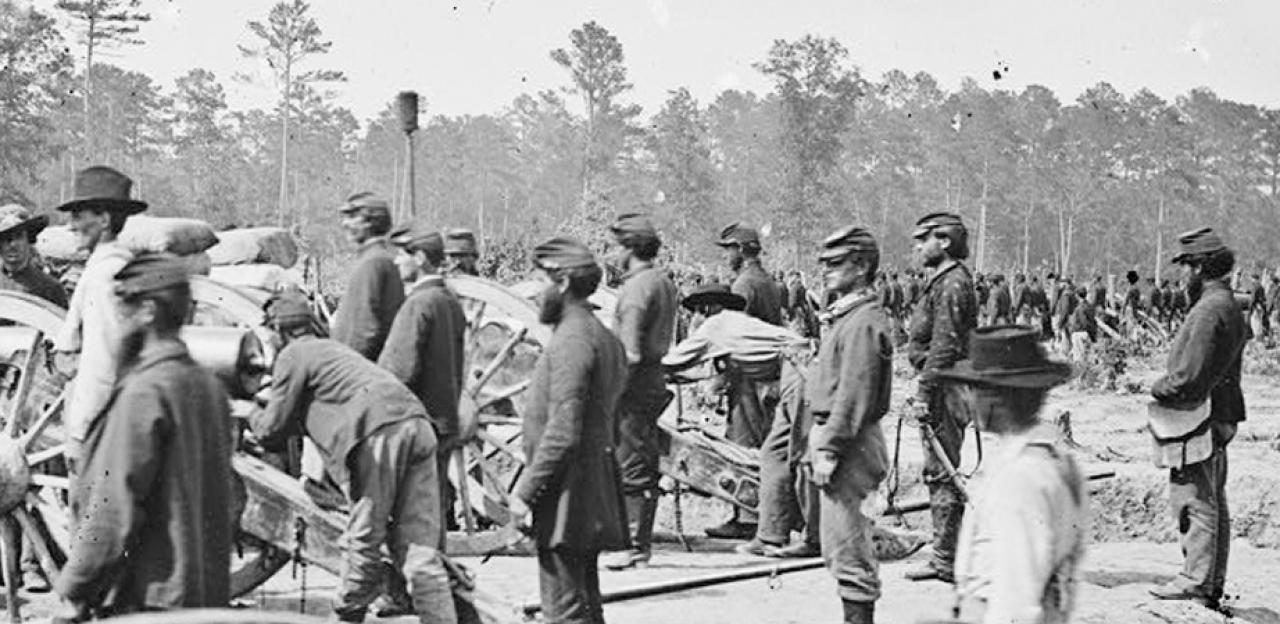Peninsula Campaign and Seven Days' Battles: The Significance and Overlap
The Peninsula Campaign and the Seven Days’ Battles of 1862 are characterized as two separate engagements during the Civil War. These two events, however, were fought as one sweeping campaign that lasted from early April to July 1st of 1862. Initiated by Union Major General George B. McClellan, the purpose of the Peninsula Campaign was to advance on and capture the Confederate capital of Richmond, Virginia, via the Virginia Peninsula situated between the James and York rivers.
In preparation for the offensive, McClellan had the Army of the Potomac transported by boat to Fort Monroe, Virginia in April of 1862. From the end of April and into May, McClellan moved his forces north into Yorktown, Virginia, where a small force of 13,000 soldiers were protecting Yorktown. McClellan laid siege to Yorktown and did not move forward; defying President Abraham Lincoln’s orders to continue onto Richmond. Confederate General Joseph E. Johnston waited to see what McClellan’s next moves would be. On May 4th, after careful consideration, Johnston ordered the 13,000 troops back toward Richmond. The next day, Union and Confederate forces clashed near Williamsburg, as the rebel forces withdrew closer to their capital.

On May 31st, Johnston led Confederate forces in an attack on McClellan’s forces south of the Chickahominy River, six miles east of Richmond. General Johnston was severely injured during the two-day battle s of Seven Pines and Fair Oaks. Confederate President Jefferson Davis quickly replaced Johnston with Robert E. Lee: a West Point graduate and veteran of the “Old Army.” Lee’s appointment changed the course of the campaign and the course of the war.
Lee was ready to strike at the Union hard and push them back down the peninsula. Throughout June, Lee began devising plans of counterattacks. In the meantime, Lee had his men dug defenses around Richmond and called in reinforcements from other parts of the Confederacy. Lee planned to launch his operation on June 25th, however, McClellan attacked first at Oak Grove, located west of Richmond, starting the Seven Days’ Battles.
June 26th began with Lee’s plan to split his army into four separate divisions in an attempt to overwhelm McClellan on multiple fronts, and to cutoff and destroy pieces of McClellan’s army. Lee anxiously waited for General Thomas J. “Stonewall” Jackson’s divisions who were behind schedule. Lee decided to continue without Jackson, fearing that they had lost the element of surprise. Major General A.P. Hill and his men assaulted the Union and pushed them east through Mechanicsville. As the Union retreated further and further, more Confederates moved with them not giving them room to breathe. The Confederates suffered more than 1,500 casualties, while the Union losses numbered some 450 casualties.
The following days saw an unrelenting series of attacks that cost Lee dedicated soldiers and resulted in tactical defeats. However, the battles gave Lee strategic victories as McClellan continuously retreated after every battle despite having superior forces. On June 27th, the Confederates led costly and uncoordinated charges throughout the day at Gaines’ Mill, causing McClellan to begin falling back on his supply line. On June 28th, the Confederates led a failed reconnaissance mission on Golding’s Farm. On June 29th, there was a failed attempt at striking the Union’s rear at Savage’s Station. On June 30th, the Battle of Glendale was a minor Confederate victory in which a Union division and commander was captured. However, the Confederate’s advances were stopped after the Union engaged in counterattacks. With McClellan on the run, constantly falling back toward the James River and his supply base at Harrison’s Landing, on July 1st Lee was focused on destroying McClellan’s army and securing Richmond. The Battle of Malvern Hill was a tactical defeat for the Confederates. Lee ordered an all-out frontal assault on the Union position. The Confederates suffered over 5,000 casualties just on Malvern Hill alone. While again victorious, McClellan nonetheless withdrew, ending the campaign. During the Seven Days’ Battles, the Confederacy sustained 20,614 casualties, while the Union casualties numbered15,849. Combined with the casualty figures from the Confederacy suffered 50,214 casualties during the two campaigns, while the Federals suffered 39,749 casualties.
The Peninsula Campaign and Seven Days’ Battles signified a turning point for the war. Where once the Confederacy had been on a moral decline in the Eastern Theater, Robert E. Lee’s appointment and overall strategic victory during the campaign secured Richmond for the short term and gave the Confederates the strategic initiative in the east. Lee earned a new reputation for audacity, and he would use this to his advantage in future engagements. The Union’s morale dampened significantly after the battles. The Union had Richmond within its grasp, and they lost it due to McClellan’s hesitation. The end of the four-month-long campaign also overshadowed Union victories in the western theater, and Lincoln began to recognize this oversight. Over the next few months, Lee carried the war away from Richmond’s back door, and to nearly the outskirts of Washington, DC.



